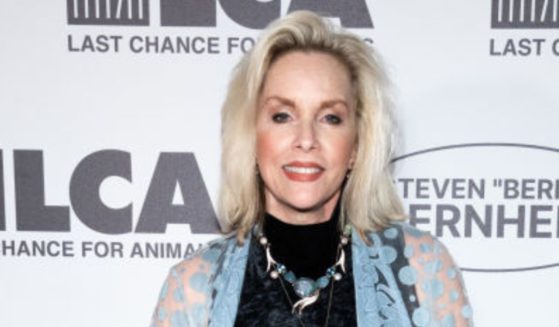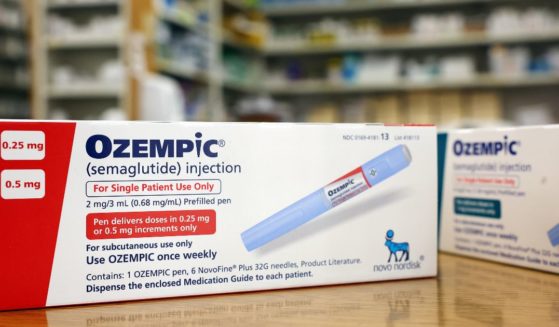Rise in suicide attempts in Texas prisons alarms advocates
DALLAS (AP) — Sawyer Letcher heard voices others couldn’t. They told him to hurt himself.
Trying to silence the clamor in his head, the 19-year-old would bang it against a prison wall in Texas until he bled. He tried to hang himself at least twice before eventually taking his life with bed sheets in his cell in May 2017.
His attempts at suicide were warnings that prison staff neglected to address, according to a lawsuit filed by Letcher’s mother, Keri Womack, against the state prison system and its public health care provider.
Her attorney, Scott Medlock, said Letcher’s death is reflective of a systemic issue plaguing Texas prisons, which he calls ill-equipped to protect people with mental illness. He said the environment is “kind of a powder keg for suicide attempts.”
“The big-picture problem is there are not enough in-patient beds to accommodate all the people” in the system who have severe mental illness, Medlock said.
Suicides in Texas prisons hit a 10-year high of 40 in 2018, and a steady rise in suicide attempts in these state-run facilities alarms prisoner rights advocates. The number of suicide attempts among Texas inmates logged by authorities has nearly tripled in the last decade, climbing from less than 700 in 2009 to nearly 2,000 in 2018 even as the number of people imprisoned in the state has fallen by 10,000, according to documents The Associated Press obtained from the Texas Department of Criminal Justice last month through a public records request.
Prisoner rights advocates say the rise supports their argument that the prisons in one of America’s most heavily incarcerated states need more outside oversight. Corrections staff and some elected leaders, however, suggest the increase can be attributed to prison workers being more focused on monitoring a growing number of inmates with serious mental health needs. The officials say the state’s prisons also have changed what they define as a suicide attempt, leading to more attempts being counted.
The Department of Criminal Justice likely “overcounts” suicide attempts as it focuses on preventing actual suicides, said spokesman Jeremy Desel, who declined to comment on the lawsuit filed by Letcher’s mother.
In 2013, Texas started including in its attempted-suicide tally people who say they intend to take their own lives, Desel said. Last year, 88% of attempted suicides among Texas inmates did not involve any injuries and less than 2% required life-saving measures, he said.
The increase in suicide attempts parallels a rise in Texas prisoners being diagnosed with mental health conditions, despite the overall prison population being on a decline. This is part of a national trend in which people behind bars increasingly have serious mental health needs that can exceed the training of corrections officers, experts say.
“Prisons and jails have become the de facto mental health institutions in our country, and their mission is not to address mental health issues. Their mission is to keep people locked up,” said Dr. Josiah Rich, a professor of medicine at Brown University and director of The Center for Prisoner Health and Human Rights, both in Providence, Rhode Island.
At the end of 2018, more than 19% of Texas’ nearly 148,000 prisoners required mental health care, compared with nearly 14% in 2009 when the state’s prisons held about 158,000 inmates, according to the Department of Criminal Justice.
Prisons in Alabama, another state with a high incarceration rate, also have seen suicides — and suicide attempts logged by authorities — increase in recent years as prison staffs have been unable to address inmates’ mental health needs. In 2017, a federal judge ruled that Alabama has provided “horrendously inadequate” care to mentally ill inmates and ordered changes, and the same judge is now weighing whether to force the state to take action after 15 inmate suicides in 15 months.
A Department of Justice report earlier this month said Alabama’s suicides occurred in the nation’s deadliest prisons where male inmates are housed in unconstitutional conditions. The report also cast doubt on how state officials classify some prisoner deaths.
“Prison systems are overwhelmed with the numbers of people with serious mental illness that they need to respond to,” said Ronald Honberg, a senior policy adviser with the National Alliance on Mental Illness. “Oftentimes the staff don’t have the training to really respond, and oftentimes the response is punitive.”
Letcher became a prisoner in Rusk, about 130 miles (209 kilometers) southeast of Dallas, after being convicted of assaulting a public servant. His mother’s lawyer, Medlock, said the prison’s “depressing and awful atmosphere” agitated Letcher. Guards found him hanging from his bed sheets twice in the 18 months before he killed himself, and medical staff had repeatedly told the prison not to allow Letcher to have materials he could use to take his own life, the lawsuit said.
Texas lawmakers have debated about whether to establish independent prison oversight. Supporters of the approach say the rise in suicide attempts needs closer monitoring and further investigation. Others say the increase shows prison officials are responding to legislative oversight.
Republican state Rep. James White, chair of the House corrections committee, said Texas prisons changing what they define as a suicide attempt is in reaction to legislative action. As a result, he said, the Department of Criminal Justice is producing “more robust and transparent reporting” on suicide attempts.
Other changes have occurred, too. In 2015, the department increased the training people get before starting work at a prison from 216 to 240 hours, with most of the added time focused on mental health and crisis intervention, Desel, the department spokesman, said.
Those who support having someone outside the prison system do oversight say it would complement legislative oversight and bring even more transparency.
Jennifer Erschabek, executive director of the Texas Inmate Families Association, said the hope is that independent oversight would help prisons better determine who is attempting suicide and why, and get inmates the care they need.
“How many more years of numbers do they have to have of suicides continuing to rise before something happens?” she said.
___
Follow Jake Bleiberg on Twitter: https://twitter.com/JZBleiberg
The Western Journal has not reviewed this Associated Press story prior to publication. Therefore, it may contain editorial bias or may in some other way not meet our normal editorial standards. It is provided to our readers as a service from The Western Journal.
Truth and Accuracy
We are committed to truth and accuracy in all of our journalism. Read our editorial standards.












